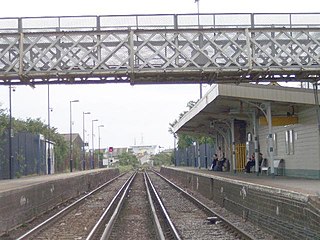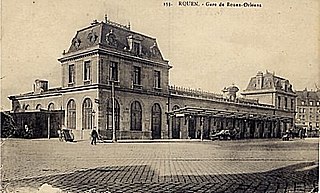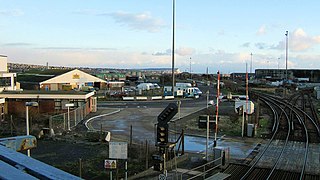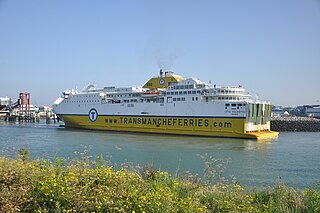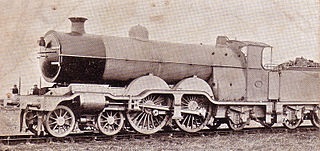This article needs additional citations for verification .(August 2008) (Learn how and when to remove this template message) |
Gare Maritime de Dieppe was a railway station in the town of Dieppe, Seine-Maritime, France and was built by CF de l'Ouest in 1874. The station was the station for passengers from Paris to Newhaven, by steamers and then ferries.

A train station, railway station, railroad station, or depot is a railway facility or area where trains regularly stop to load or unload passengers or freight. It generally consists of at least one track-side platform and a station building (depot) providing such ancillary services as ticket sales and waiting rooms. If a station is on a single-track line, it often has a passing loop to facilitate traffic movements. The smallest stations are most often referred to as "stops" or, in some parts of the world, as "halts".
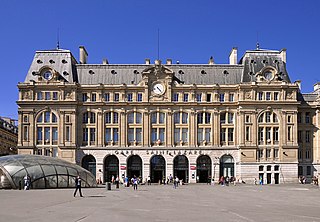
The Gare Saint-Lazare, officially Paris-Saint-Lazare, is one of the six large terminus railway stations of Paris. It serves train services toward Normandy, northwest of Paris, along the Paris–Le Havre railway. Saint-Lazare is the second busiest station in Paris, after the Gare du Nord. It handles 275,000 passengers each day. The station was designed by architect Juste Lisch, and the maître de l'oeuvre was Eugene Flachat.

Newhaven is a channel ferry port in East Sussex in England, with regular passenger services to Dieppe.
Contents
Steam ships began crossing the English Channel in 1816 and linked Dieppe to Brighton.
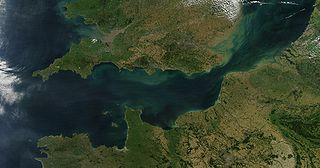
The English Channel, also called simply the Channel, is the body of water that separates Southern England from northern France and links the southern part of the North Sea to the Atlantic Ocean. It is the busiest shipping area in the world.

Brighton is a seaside resort on the south coast of England that is part of the City of Brighton and Hove, located 47 miles (76 km) south of London.

From 1824, the General Steam Navigation Company began operations with two crossings per week. Its ships were paddle steamers 25m in length that reached Brighton in 9 hours.
The General Steam Navigation Company (GSNC), incorporated in 1824, was London's foremost short sea shipping line for almost 150 years, and the oldest shipping company in the world to begin business with steamships.
In 1841, the London, Brighton and South Coast Railway was opened to Brighton, and subsequently to Lewes and Newhaven. Newhaven rebuilt its harbour to welcome larger ships.

The London, Brighton and South Coast Railway was a railway company in the United Kingdom from 1846 to 1922. Its territory formed a rough triangle, with London at its apex, practically the whole coastline of Sussex as its base, and a large part of Surrey. It was bounded on its western side by the London and South Western Railway (L&SWR), which provided an alternative route to Portsmouth. On its eastern side the LB&SCR was bounded by the South Eastern Railway (SER) – later one component of the South Eastern and Chatham Railway (SE&CR) – which provided an alternative route to Bexhill, St Leonards-on-Sea, and Hastings. The LB&SCR had the most direct routes from London to the south coast seaside resorts of Brighton, Eastbourne, Worthing, Littlehampton and Bognor Regis, and to the ports of Newhaven and Shoreham-by-Sea. It served the inland towns/cities of Chichester, Horsham, East Grinstead and Lewes, and jointly served Croydon, Tunbridge Wells, Dorking and Guildford. At the London end was a complicated suburban and outer-suburban network of lines emanating from London Bridge and Victoria, and shared interests in two cross-London lines.

Lewes is the county town of East Sussex and by tradition of all of Sussex. Lewes remains the police and judicial centre for all of Sussex and is home to Sussex Police, East Sussex Fire & Rescue Service, Lewes Crown Court and HMP Lewes. It is a civil parish and is the centre of the Lewes local government district as well as the seat of East Sussex County Council at East Sussex County Hall. The population of Lewes is now around 17,000. The settlement is a traditional market town and centre of communications and, in 1264, it was the site of the Battle of Lewes. The town's landmarks include Lewes Castle, the remains of Lewes Priory, Bull House, Southover Grange and public gardens, and a 16th century timber-framed Wealden hall house known as Anne of Cleves House. Other notable features of the area include the Glyndebourne festival, the Lewes Bonfire and the Lewes Pound.
The railway arrived in Dieppe from Rouen on 1 August 1848 and the then CF de Paris-Rouen which later became the CF de l'Ouest was becoming interested in the GSNC and a joint venture with the LBSCR and Mr Marples (owner of the GSNC). Profits were then split three ways; 37% for the C.F. de l'Ouest, 44% for Marples and 19% for the LBSCR.
By 1859, profits had begun to diminish and the two railway companies bought the maritime operations.
The original "Steamer Depot" was built on the quai Henri IV connected to the Dieppe Station by a short branch line that ran along quai Duquesne, past the trade and industry offices, fire station, the fishing syndicate and the public fish market. The Paris train ran alongside the quay in front of a long narrow building that included goods and passenger terminals and a restaurant. This building later became the Gare Maritime's goods depot when, following deepening of the harbour, a new passenger terminal was built further up the quay. This had one track either side of a red brick building and could handle two passenger trains simultaneously. As well as the passenger ferries, a regular service of smaller freight ferries also ran between Dieppe and Newhaven and the station became increasingly important for urgent goods as well as for passengers.

Gare de Dieppe is the train station for the town of Dieppe, Seine-Maritime and was built by Chemins de Fer de Paris à Cherbourg on 28 July 1848. It used to have a direct connection with Paris-St. Lazare via Serqueux and Gisors, but this line was closed in 2006. Along with Dieppe-Port, it was a stop on the trains from Paris to London via Newhaven. The station is now the terminus of a line from Paris via Rouen.
The passenger terminal was damaged beyond repair during the second world war. It was demolished soon afterwards and, after several years when passengers used temporary buildings, a new two storey concrete terminal building in a modernist style was opened on 17 June 1953. This had three railway tracks, one of them running along the side of the quay, and could handle two loco hauled boat trains and the local railcar to Rouen. In the 1960s, diesel traction began to replace steam locos on the boat trains operating to and from the harbour station. Combined rail and ferry services ended in 1994 after Stena, at that time operating as Stena Sealink on the Newhaven-Dieppe and Dover-Calais crossings, had transferred to a new terminal on the other side of the harbour. These changes coincided with the opening of the Channel Tunnel, and the concomitant withdrawal of all SNCF Channel boat trains.
The whole station was demolished in early 1995 and virtually no physical traces now remain.


